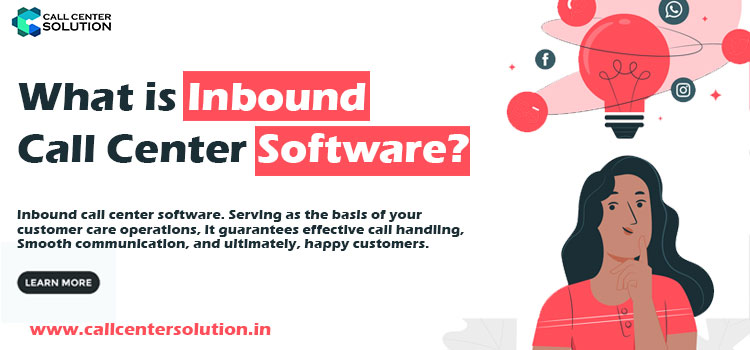What is Inbound Call Center Software?
CCSSolutions . Follow
6 months ago

The flow of incoming client calls can be efficiently managed and optimized with the help of inbound call center software. Serving as the basis of your customer care operations, it guarantees effective call handling, smooth communication, and ultimately, happy customers.
Understanding Inbound Call Center Software
Consider a busy call center where professionals are handling several calls, answering consumer questions, and working to deliver prompt service. With its full set of features to improve customer experience and manage operations, inbound call center software brings order to this crowded environment.
Here's what inbound call center software does:
Centralizes call management: It serves as a single platform for handling all incoming calls, assigning them to the best agent by the call type, talent, and availability.
Automates tasks: Agent time and effort are saved by features like interactive voice response (IVR) systems, which automate common activities like answering calls, getting the caller's basic information, and connecting them to the relevant department.
Improves agent productivity: Call recording, call monitoring, performance analytics, and other tools assist agents with improving their communication skills, pinpointing areas for development, and finally providing better customer support.
Provides multi-channel support: Many systems give a single view of consumer interactions across many touchpoints by integrating with additional communication channels including chat, email, and social media.
Generates valuable insights: Deep data and analytics offer insightful information about call volume, agent success, customer happiness, and areas in need of development.

Benefits of Using Inbound Call Center Software
Using incoming call center software has several advantages for your company.
Interactive Voice Response (IVR): Callers may self-serve by following automated menus that shorten wait times and route them to the right agent.
Automatic Call Distribution (ACD): Calls are routed to available agents according to set rules, such as workload, language, or skill set.
Call Monitoring and Coaching: Agents can receive coaching for better performance, real-time feedback, and the option to listen in on live calls from supervisors.
Call Recording: Calls are recorded for quality control, training, and clash settlement.
Multi-Channel Support: Connects with additional channels of contact, such as chat, email, and social media, to provide a cohesive service for customers.

Choosing the Right Inbound Call Center Software
With so many possibilities for incoming call center software, it's important to think carefully before selecting the best one for your company. The following are some important things to remember:
Business Needs: Assess your unique requirements and goals, including call volume, agent needs, financial limits, and feature requests.
Scalability: Select a system that can grow with your company and adjust to your evolving demands.
Ease of Use: Make sure the program has easy-to-use interfaces that require little training for both administrators and agents.
Integrations: Think about how well the program integrates with the email, CRM, and other business software you currently use.

Conclusion
Software for inbound call centers is a vital resource for companies looking to streamline their customer support processes. Optimizing call management, enhancing agent efficiency, and offering insightful data, enable companies to provide outstanding customer service and create enduring bonds with their clients.
Purchasing the right incoming call center software can change everything and turn your customer care department into an advantage for your company.
Recommended topics
Recommended from Guest Post

Freya Parker
Streamlining Sustainability: The Importance and Process of Car Disposal
February 19, 2024Shubh
Unveiling the Winning Streak: Dive into the World of Cricket Betting with Cricbet99.Win and Crickbet 99.Com
February 15, 2024Sneha Kumari
